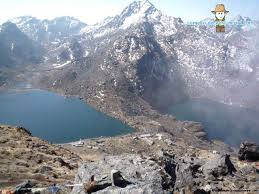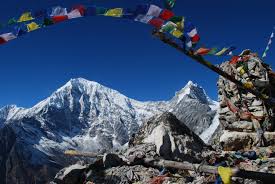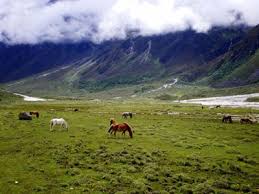Langtang is one of the most unspoiled national parks of Nepal. Situated North of Kathmandu, it is the most easily accessible highland sanctuary from the capital. Langtang covers 1,710 sq. km. forming the upper catchment areas of two of Nepal's largest river systems - the Trishuli and Koshi. There is great latitudinal variation, starting at 1,500 m. and ascending to the top of Mt. Langtang Lirung at 7,234 m. As a result the park has immense ecological diversity. Some of the most attractive areas of the park include the Langtang Valley, the holy lakes at Gosainkunda, and the forested hillsides above the village of Helambu.

The deep gorges of Bhote Koshi and Langtang Khola are thickly forested with rhododendron, oak, maple and alder. The stretch of forest around Ghoda Tabela in the lower Langtang Valley and below Gosainkunda is inhabited by the red panda, a rare and threatened symbol of a healthy Himalayan ecosystem. Other animals, common to these forests are wild boar, Himalayan black bear, ghoral, grey langur monkey and leopard. The rare Himalayan hony guide has been sighted here and the park is also the home for Impeyan, Tragopan and kalij pheasants among others. Larch, a rare deciduous conifer, is also found in the forest of lower Langtang Valley. Further up, Himalayan tahr, musk deer and snow leopard can be found. The upper Langtang Valley is one of he few known breeding grounds of the ibils bills besides the Tibetan snow cock and snow partridge.

Like other Himalayan nature parks, Langtang has to be explored on foot. There are several possible trails to choose from depending on preference and time available. The langtang Valley is easily approached from Dhunche town and park office, which is a day's drive from Kathmandu. The upper reaches of Langtang can be reached in four days of easy walking, however, it is advisable to spend a few days around the forest at Ghoda Tabela to watch for the red panda. Once above Langtang village and the monastery at Kyangin, visitors can explore the high valley of Langshisa Yala peak and Tsero, Ri. These and other villages of upper Langtang are inhabited by people of Tibetan descent whereas the villagers of Dhunche, Bharkhu and Syabru further down are home to the Tamangs of Nepal's middle hills.
Entry Fee:
- For Nepalese Nationals, Free
- For SAARC Nationals, Rs. 100/- per person
- For Other Foreign Nationals, Rs. 1,000/-per person
- (Note: Entrance fee not required for children under 10 years).
Access:
 The high pass out of Langtang, Gang la(5,132m), can be negotiated only by well prepared hikers with guides, food and camping equipment. The Gosainkunda can also be reached in a few days from Dhunche, making it possible to visit both areas in the same outing.
The high pass out of Langtang, Gang la(5,132m), can be negotiated only by well prepared hikers with guides, food and camping equipment. The Gosainkunda can also be reached in a few days from Dhunche, making it possible to visit both areas in the same outing.
 Alternatively, trekkers can hike to Gosainkunda from Sundarijal in the Kathmandu Valley via the picturesque villages of Helambu. The richly forested route that climbs steeply from here to Thare Pati and Gopte Cave is alive with birds and flowering rhododendron and orchids in the spring. Tourists can visit the Langtang National Park anytime from March to November but it is best to avoid the monsoon season because of rains and overflowing rivers. The nature enthusiast on the other hand might find the rainy season ideal because of the profusion of plant life.
Alternatively, trekkers can hike to Gosainkunda from Sundarijal in the Kathmandu Valley via the picturesque villages of Helambu. The richly forested route that climbs steeply from here to Thare Pati and Gopte Cave is alive with birds and flowering rhododendron and orchids in the spring. Tourists can visit the Langtang National Park anytime from March to November but it is best to avoid the monsoon season because of rains and overflowing rivers. The nature enthusiast on the other hand might find the rainy season ideal because of the profusion of plant life. 






 4:29 AM
4:29 AM
 Niraj Luitel
Niraj Luitel
